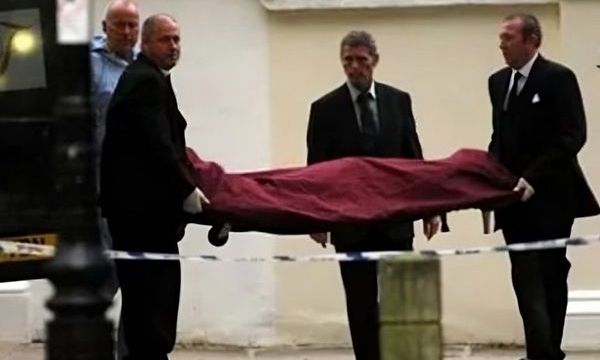In the heart of Lower Manhattan, an unusual 29-story skyscraper, devoid of windows, stands tall and mysterious. Its code name is Titanpointe, and it is located at 33 Thomas Street. This building has baffled New Yorkers for years.1
The building, constructed in 1974, was designed to withstand atomic blasts and was initially intended to house vital telecommunications equipment. It was envisioned as a communication nerve center, fortified against nuclear threats, by the architectural firm John Carl Warnecke & Associates.

This imposing structure, a gray tower of concrete and granite soaring 550 feet into the New York skyline, remains, unlike any other building in its vicinity. Unlike neighboring residential and office buildings, it does not have a single window and remains unilluminated. At night, it takes on an eerie presence, and by day it casts a giant shadow, its square vents emitting a faint hum, often drowned out by the city’s bustling sounds.
For decades, 33 Thomas Street, also nicknamed the “Long Lines Building,” has captured the imagination of New Yorkers as one of the city’s weirdest and most iconic skyscrapers. But the true purpose of this enigmatic structure has remained largely concealed, shrouded in secrecy.
The Secret Behind 33 Thomas Street
Beyond its enigmatic exterior, 33 Thomas Street conceals a deeper secret. This building appears to be more than just a telecommunications hub. Evidence from documents obtained by NSA whistleblower Edward Snowden, along with architectural plans and interviews with former AT&T employees, suggests that 33 Thomas Street served as an NSA surveillance site, code-named Titanpointe.
The NSA’s involvement goes beyond mere speculation. Inside the building, there’s a major international gateway switch that routes phone calls between the U.S. and countries worldwide. The NSA is believed to have tapped into these calls from a secure facility within the AT&T building. This covert surveillance program has targeted not only international organizations like the United Nations, the International Monetary Fund, and the World Bank but also numerous countries, including U.S. allies.
While AT&T has cooperated with the NSA on surveillance, few details have emerged about the specific role of facilities like 33 Thomas Street in carrying out top-secret programs. The Snowden documents, however, provide unprecedented insight into how NSA equipment has been integrated into AT&T’s network in New York City. This integration reveals the methods and technology employed by the agency to gather communications data from the company’s systems.
The NSA’s presence within this iconic skyscraper raises questions about the boundaries of surveillance in the modern world. As Elizabeth Goitein, co-director of the liberty and national security program at the Brennan Center for Justice, points out, “This is yet more proof that our communications service providers have become, whether willingly or unwillingly, an arm of the surveillance state.” The deep integration of the NSA within domestic communications infrastructure challenges the notion that such surveillance can be neatly confined to non-American targets.
AT&T, Privacy, and Legal Oversight
AT&T’s close collaboration with the NSA has been well-documented. While AT&T has maintained a long-standing relationship with the government, it’s unclear whether the NSA was using AT&T’s space or equipment at 33 Thomas Street. This ambiguity raises questions about the extent of government surveillance within the building.2
The New York Times and ProPublica reported in August 2015 that AT&T had a history of collaborating with the NSA for decades and had been lauded by the agency for its “extreme willingness to help.” However, neither the materials from Mr. Snowden nor the new reports state with certainty that the NSA was using AT&T space or equipment. As it happens, while AT&T Inc. owns the land at 33 Thomas, it has only about 87 percent of the floor space; the balance is owned by Verizon.
The NSA’s involvement in surveillance within 33 Thomas Street raises significant legal and ethical questions. The building may stand as a monument to both the delicate balance between privacy and security in our interconnected world and the challenges of ensuring adequate oversight in an era of advanced technology and government surveillance.
In conclusion, 33 Thomas Street remains an iconic and enigmatic skyscraper in New York City, holding within its concrete walls both the history of telecommunications and the mysteries of modern surveillance. The true extent of its involvement in government spying may forever remain concealed, but it stands as a symbol of the delicate balance between privacy and security in our interconnected world.


